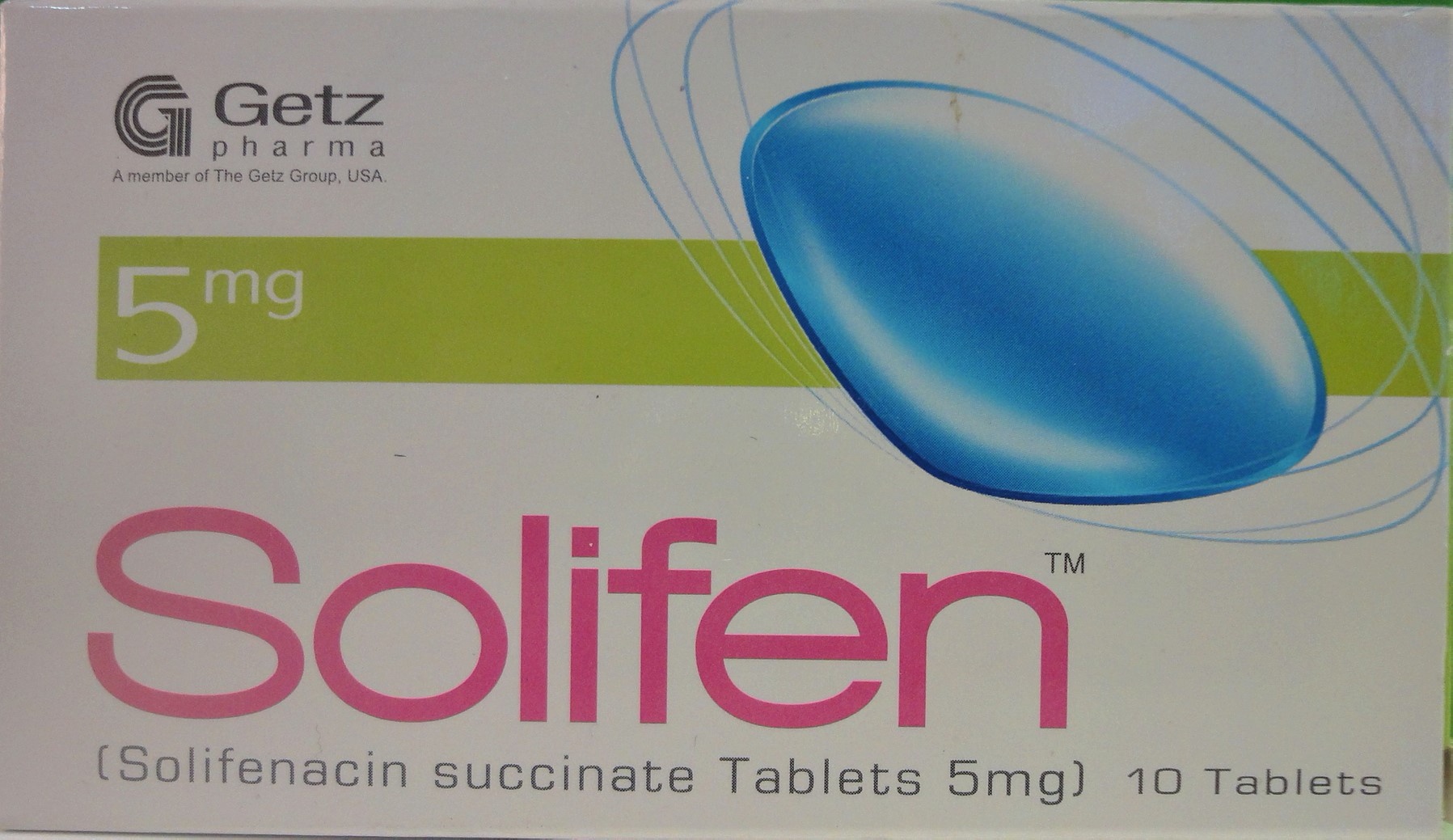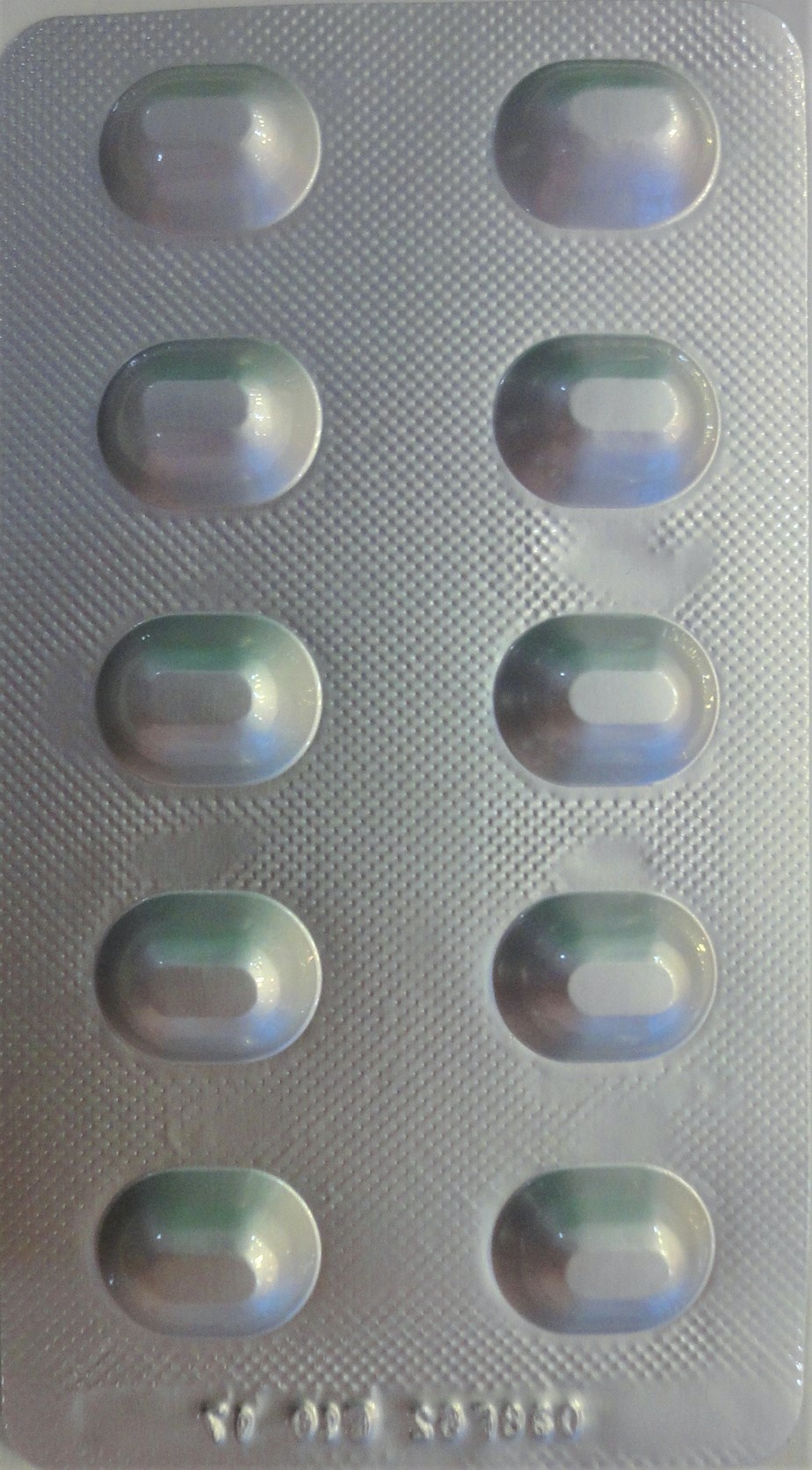SOLIFEN Tablet
ក្រុមហ៊ុនផលិតឱសថ:
Getz Pharma(Pvt.) Limited, Pakistan
ក្រុមហ៊ុនចែកចាយឱសថនៅប្រទេសកម្ពុជា:
ALLIANCE PHARMA CAMBODGE


- សារធាតុសកម្ម
- ប្រសិទ្ធិភាពព្យាបាល និង កម្រិតប្រើប្រាស់
- ហាមប្រើ
- ផលរំខាន
- អន្តរប្រតិកម្ម
- ស្ត្រីមានផ្ទៃពោះ និង ស្ត្រីបំបៅដោះកូន
- ការប្រុងប្រយ័ត្នជាពិសេស
- សកម្មភាពឱសថ បរិយាយប័ណ្ណឱសថ
-
សារធាតុសកម្ម
-
ប្រសិទ្ធិភាពព្យាបាល និង កម្រិតប្រើប្រាស់
Indicated for the treatment of overactive bladder with symptoms of urge urinary incontinence, urgency and urinary frequency or frequent micturition.
Dosage
SOLIFEN should be taken with liquids and swallowed whole. SOLIFEN can be administered with or without food.
Adults
The recommended dose is 5mg once daily. If needed, the dose may be increased to 10mg once daily.
Patients with renal impairment
No dose adjustment is necessary for patients with mild to moderate renal impairment (CLcr>30mL/min). Patients with severe renal impairment (CLcr<30mL/min) should be treated with caution and receive no more than 5mg once daily.
Patients with hepatic impairment
No dose adjustment is necessary for patients with mild hepatic impairment. Patients with moderate hepatic impairment (Child-Push score of 7-9) should be treated with caution and receive no more than 5mg once daily.
Potent Inhibitors of CYP3A4
Maximum dose of 5mg is recommended in the patients receiving drugs such as ketoconazole or ritonavir that are strong inhibitors of the CYP450 isoenzyme CYP3A4.
-
ហាមប្រើ
In patients with
- Hypersensitivity to the active substance or to any of the excipients.
- Urinary retention.
- Gastric retention.
- Uncontrolled narrow-angle glaucoma.
- Myasthenia gravis.
- Patients undergoing hemodialysis.
- Patients with severe hepatic impairment and renal impairment.
Solifenacin succinate should not be used in children as safety and efficacy in children have not yet been established.
-
ផលរំខាន
Very common: Dry mouth
Common: Constipation, nausea, dyspepsia, abdominal pain, blurred vision.
Uncommon: Gastroesophageal reflux diseases, dry throat, urinary tract infection, cystitis, somnolence, dysgeusia, dry eyes, fatigue, peripheral edema, nasal dryness, dry skin, difficulty in micturation.
Rare: Colonic obstruction, fecal impaction, urinary retention.
-
អន្តរប្រតិកម្ម
- Drugs having anticholinergic properties
- Drugs that stimulate the motility of gastrointestinal tract (e.g., metoclopramide, cisapride)
- CYP3A4 inhibitors: CYP3A4 substrates with higher affinity (e.g., ketoconazole, verapamil, diltiazem), CYP3A4 inducers (e.g., rifampacin, phenytoin, carbamazepin).
-
ស្ត្រីមានផ្ទៃពោះ និង ស្ត្រីបំបៅដោះកូន
Pregnancy
There are no adequate and well-controlled studies in pregnant women. Solifenacin succinate should be used during pregnancy only if the potential benefit justifies the potential risk to the fetus.
Nursing Mothers
It is not known whether solifenacin succinate is excreted in human milk. Because many drugs are excreted in human milk, solifenacin succinate should not be administered during nursing. A decision should be made whether to discontinue nursing or to discontinue solifenacin succinate in nursing mothers.
-
ការប្រុងប្រយ័ត្នជាពិសេស
Solifenacin succinate should be administered with caution to patients:
- with clinically significant bladder outflow obstruction because of the risk of urinary retention.
- with decreased gastrointestinal motility.
- being treated for narrow-angle glaucoma.
- with reduced renal function.
- with reduced hepatic function.
- of hiatus hernia/Gastroesophageal reflux who are concurrently taking medicinal products (such as bisphosphonates) that cause or exacerbate oesophagitis.
Hereditary problems
Patients with rare hereditary problems of galactose intolerance, the Lapp lactase deficiency or glucose-glucose malabsorption should not take this medicinal product.
Congenital or Acquired QT prolongation
Caution should be taken for the patients with known history of QT prolongation or the patients who are taking the medications known to prolong the QT interval.
-
សកម្មភាពឱសថ
Solifenacin is a competitive, muscarinic acetylcholine receptor antagonist. The binding of acetylcholine to these receptors, particularly the M3 receptor subtype, plays a critical role in the contraction of smooth muscles. By preventing the binding of acetylcholine to these receptors, solifenacin reduces smooth muscle tone in the bladder, allowing the bladder to retain larger volumes of urine and reducing the number of micturition, urgency and incontinence episodes.
*ព័ត៌មានឱសថត្រូវបានរៀបរៀងដោយ អ៊ីម៉ាតុគឹ មេឌីក (ខេមបូឌា) ដោយផ្អែកលើប្រភពព័ត៌មានខាងក្រោម។ សម្រាប់ព័ត៌មានលម្អិត សូមស្វែងរកនៅក្នុងក្រដាសព័ត៌មាននៃឱសថនីមួយៗ ឬ សាកសួរទៅកាន់ក្រុមហ៊ុនឱសថឬតំណាងចែកចាយនៃឱសថនីមួយៗ។
ប្រភពព័ត៌មាន៖
- ក្រដាសព័ត៌មាននៃឱសថសម្រាប់អ្នកជំនាញវេជ្ជសាស្ត្រដែលប្រើប្រាស់នៅប្រទេសជប៉ុន (Pharmaceutical and Medical Devices Agency, Pmda): https://www.pmda.go.jp
- ព័ត៌មានសង្ខេបនៃឱសថសម្រាប់អ្នកជំងឺដែលប្រើប្រាស់នៅប្រទេសជប៉ុន: http://www.rad-ar.or.jp
